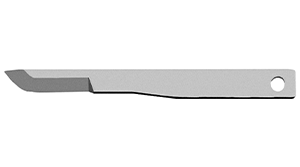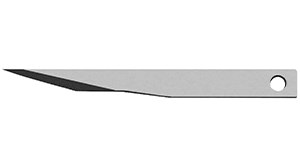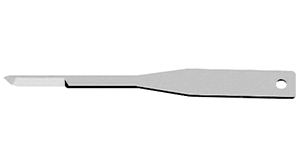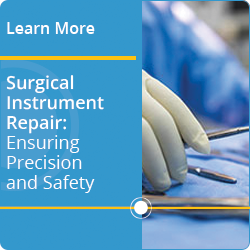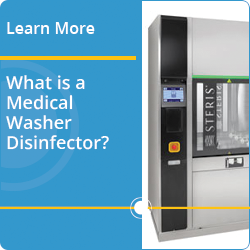Effective retraction requires proper technique and attention to detail. Key tips include:
- Proper Placement: Position the retractor blades or arms correctly for adequate exposure without causing unnecessary trauma to surrounding tissues
- Gentle Handling: Handle tissues or organs with care to minimize the risk of damage
- Regular Inspection: Inspect retractor blades or arms for wear or damage and replace them as needed
- Collaboration: Coordinate with the surgical team for smooth retraction and optimal visibility throughout the procedure
Laparoscopic instruments

Laparoscopic instruments are essential tools in minimally invasive surgeries. Unlike traditional open surgeries that require large incisions, laparoscopic procedures involve small incisions through which a laparoscope and specialized instruments are inserted. These instruments enable surgeons to perform precise movements and manipulations inside the body without extensive cutting.
For years, surgeons have used laparoscopic instruments with poor ergonomics, leading to increased neuromuscular and arthritic symptoms.4 A study found that 87% of surgeons performing minimally invasive surgery experience occupational injury symptoms.5 To address this, Snowden-Pencer Ergonomic Ring Handles were created to evenly distribute pressure across the hand, reducing fatigue and improving comfort during lengthy procedures.

Different types of laparoscopic instruments serve unique purposes during surgery. For example, a laparoscopic trocar creates access points for the laparoscope and other instruments. Other crucial tools include laparoscopic scissors, graspers, dissectors, and needle holders, each designed for specific tasks within the surgical field.
Laparoscopic surgical instruments are utilized in a variety of procedures, including gallbladder removal, hernia repair, appendectomy, and gastric bypass surgery. Surgeons use these instruments through small incisions while visualizing the surgical site with the laparoscope, which provides a high-definition view of internal organs and tissues.
Surgical Clamps
Surgical clamps are indispensable tools to secure tissues, blood vessels, or other structures during surgical procedures. Different clamps serve specific functions, ensuring the success and safety of surgeries.

Hemostatic Clamps: Also known as artery forceps, hemostatic clamps help surgeons achieve hemostasis by clamping blood vessels, which can then be cauterized or tied off with sutures.6 These clamps feature serrated jaws for a firm grip and are constructed from durable materials, ensuring longevity and reliability in the operating room.

Towel Clamps: Towel clamps, or towel forceps, secure surgical drapes or towels to maintain a sterile field. Their ratcheted design allows for easy application and secure attachment. Our towel clamps are precision-crafted for optimal performance and ease of use.

Organ Holding Clamps: Designed to hold organs or tissues in place during surgery, organ holding clamps have a delicate yet sturdy construction to avoid tissue damage while providing a secure grip. These clamps offer maximum control and stability during delicate surgical maneuvers.
QuickRelease Kerrisons
QuickRelease Kerrisons are specialized surgical instruments for precise bone cutting commonly used in spinal and neurosurgical procedures. They feature a unique quick-release mechanism for easy disassembly and cleaning, ensuring optimal hygiene and functionality. Made from high-quality materials, QuickRelease Kerrisons provide durability and reliability, enabling surgeons to perform delicate procedures accurately. Their ergonomic design reduces hand fatigue, enhancing the surgeon’s control and precision during operations. QuickRelease Kerrisons are essential tools for successful surgical outcomes and improved patient care.

Decontamination of Instruments
Proper decontamination of complex instruments, including thoroughly cleaning all surfaces and lumens, is essential. Instruments should be decontaminated in an open position to ensure comprehensive cleaning. Furthermore, all modular or take-apart instruments must be disassembled during decontamination and sterilization. Before sterilization, instruments should be meticulously inspected for bioburden. Adherence to the manufacturer’s instructions for proper cleaning is imperative. Additionally, it is crucial to follow institutional policies and protocols and appropriate standards for decontamination and sterilization.
Additionally, instrument cleaning brushes help to support the manual cleaning and decontamination of surgical instruments. STERIS offers a wide range of general and channel cleaning brushes, including standard channel, toothbrush-style, pipe cleaner, lumen-guard brushes, and more.
Sterilization Container for Instruments

Sterilization containers are essential in maintaining the sterility and safety of surgical instruments. Sterile containers are designed to withstand high temperatures and pressures during sterilization, ensuring that instruments remain contaminant-free. Made from durable materials like stainless steel or high-grade plastics, sterilization containers provide a secure environment that protects instruments from damage and contamination during storage and transport. Also, sterilization containers often feature filters and locking mechanisms to maintain sterility until the instruments are ready, thereby playing a crucial role in infection control and patient safety.
The Genesis sterilization containers are designed with hard-coat anodized aluminum to protect and maintain the sterility of your surgical instruments. They are offered in various sizes and with various baskets and accessories to help organize instrument set-up.
Maintenance of Surgical Instruments
Surgical instrument protection products help to extend the life span of instruments. Instrument tip caps protect the delicate ends of surgical instruments from wear or damage during sterilization, transportation, and storage. Single-use instrument sleeves can be used to protect instruments, specifically hinged and non-hinged instruments, during sterilization.
As surgical instruments experience wear and tear over time, their performance can diminish, making maintenance and expert repair essential to extend their lifespan and ensure optimal functionality. STERIS offers surgical instrument repair services for manual instrumentation across service specialties, including stainless steel, laparoscopic, and microsurgical instruments. These services can prevent damage to surgical instruments and extend their lifespan. The comprehensive range of services, such as general maintenance, complex repairs, instrument inspection, testing, laparoscopic instrument services, and microsurgical instrument repairs, helps reduce costly repairs. Learn more about Surgical Instrument Repair: Ensuring Precision and Safety.
Conclusion
The significance of surgical instruments in healthcare cannot be overstated. Surgeons depend on these tools for precise movements, proper tissue manipulation, and minimizing trauma to surrounding structures. Using appropriate instruments improves surgical outcomes and patient safety.
The evolution of surgical instruments is truly remarkable. From essential tools, they have advanced to sophisticated instruments. Ongoing efforts to improve their design, materials, and functionality have created minimally invasive instruments, robotic-assisted surgical tools, and specialized instruments for specific procedures.
STERIS offers a broad range of surgical instruments to meet healthcare providers' unique needs. Our instruments are meticulously crafted to ensure precision and adhere to the highest quality standards.
Contributors

Lena Fogle BSN, RN, CNOR
Senior Director Global Clinical Solutions, STERIS Healthcare

Lena is a seasoned healthcare leader with extensive experience leading complex perioperative environments as well as new program development, continuous process improvement, clinical outcomes, operational excellence, and stakeholder experience.
Related Resources
 United States
United States
 Canada (EN)
Canada (EN) Canada (FR)
Canada (FR) Deutschland
Deutschland Italia
Italia United Kingdom
United Kingdom Australia
Australia New Zealand
New Zealand Singapore
Singapore Brasil
Brasil México
México










